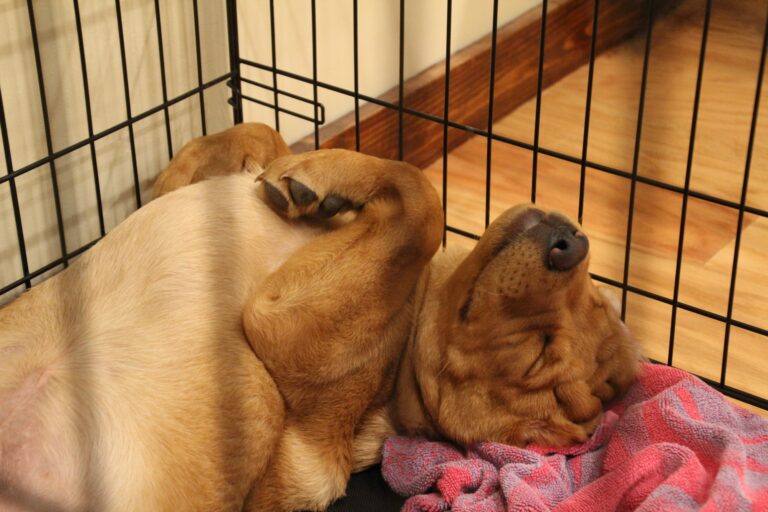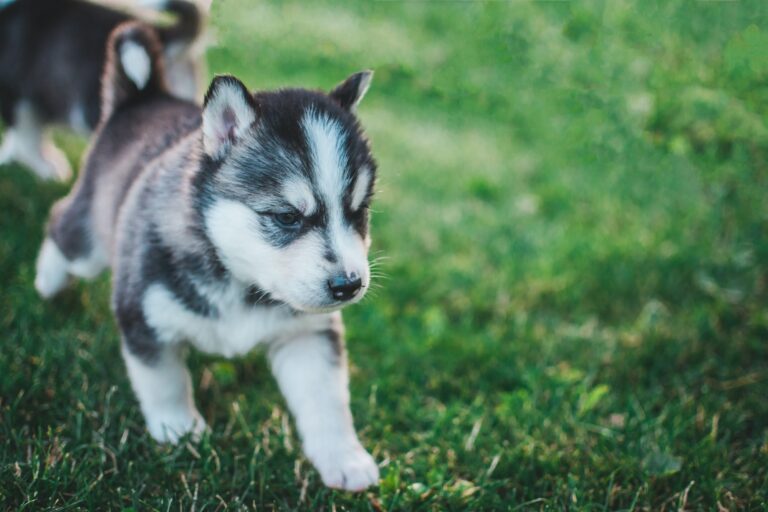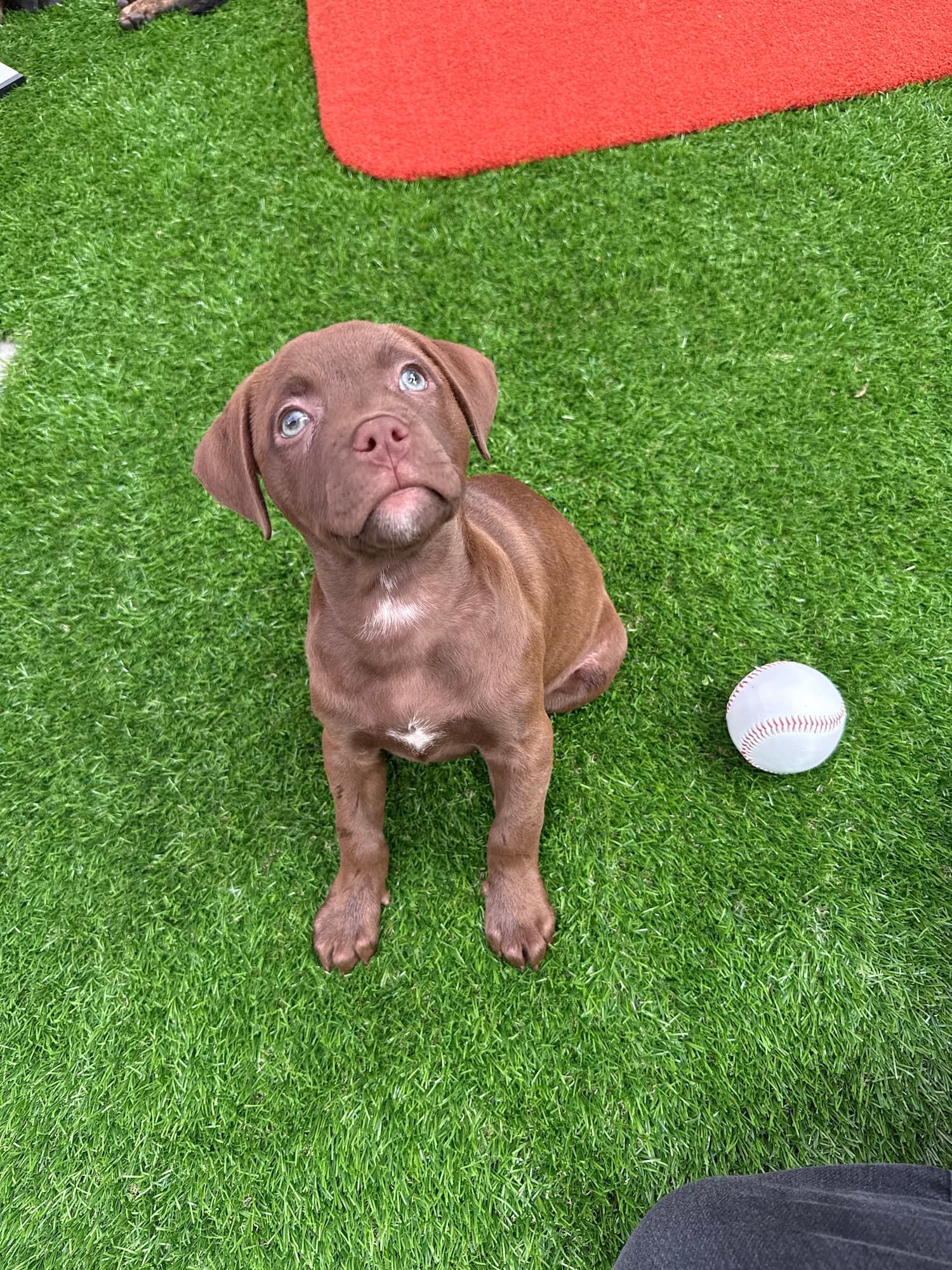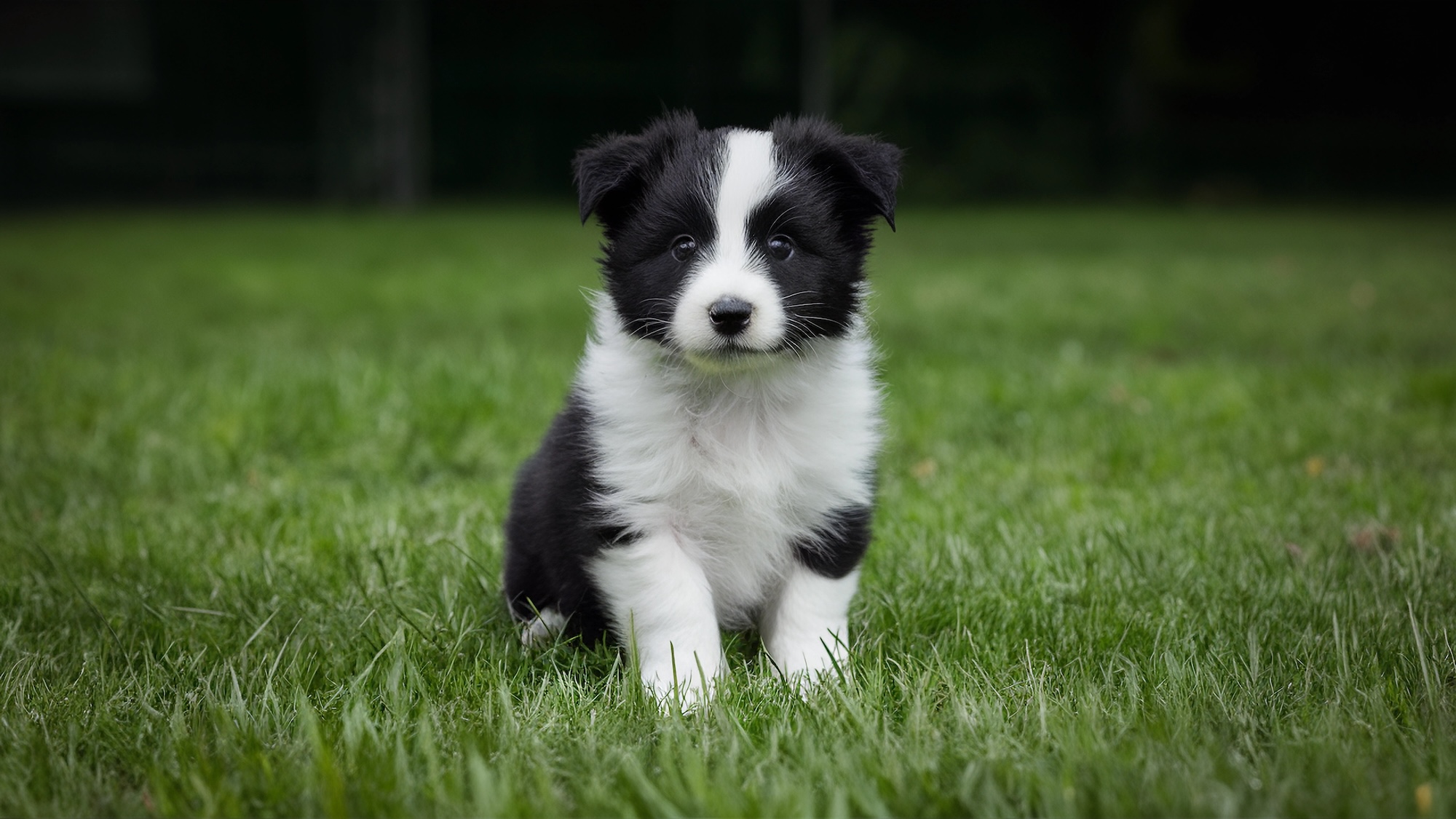Many new dog owners dread the idea of potty training a puppy. It seems like such an insurmountable task when you start out. But like many things involved in puppy training, and life in general, if you break it down into smaller, accessible steps, the impossible becomes possible.
With a plan, patience, and observation, you can set your puppy up for success, so that they know exactly where they should pee and poop, and, in the meantime, develop a healthy sense of boundaries in your house.
Before you start: Adopt the right mindset
To guide your potty training journey, it’s helpful to keep one simple puppy potty training tip in mind: “The key to your puppy learning how to not go inside is not giving them the opportunity to go inside!” says Tyler Muto, founder and instructor at Consider The Dog and K9 Connection Dog Training in Buffalo, New York.
It sounds like stating the obvious. But it’s an important mindset to start out with—potty training, especially in the beginning, is not about trying to punish your dog for going inside. It’s about ensuring they always have the opportunity to go outside.
To that end, the real training begins with dog owners. Potty training doesn’t rely on your puppy being “good;” it relies on you being good at consistency, time management, and rewarding the behavior that you want.
Step 1: Get a crate
“A crate is an absolutely essential tool for potty training,” says Muto (and many, many other trainers agree). Keeping your puppy confined to their own space can be a huge help in potty training, and training in general. A crate will help your puppy learn to “hold it” because a dog doesn’t normally want to soil an area where they spend time living and sleeping. It gives them a controlled space where they can be unsupervised (so they’re not sneaking into a corner of your house for a pee or poop you’ll discover too late).
There are two keys to making sure your dog is treating the crate as their living space.
- Ensure that the crate is the right size. Crates should be large enough so that your dog can sit, lie down and turn around comfortably, but not too big so that they can make a section of the crate into a potty spot. A size-adjustable crate with a divider works well for small puppies who will quickly grow into larger puppies.
- Have your puppy spend enough time in the crate that they view it as their home. Your dog should associate the crate with good things, and with being safe and content. So, it’s important to not treat going into the crate as punishment.

If your pup doesn’t pee or poop during a potty break, make sure they go directly to their crate or a confined area once back in the house. Don’t let them run free in your house unsupervised.
Give them another 15 minutes (or longer if you’ve determined that your dog can hold it for a longer period of time) in the crate and go outside and try again.
“What happens is, it can be super overwhelming outside so it’s easy for a puppy’s mind to be elsewhere and forget they have to go unless they really have to go badly,” says Blake Rodriguez, of Dream Come True K9 in New York. “Then when they get into an environment that they’re comfortable in, they go, ‘Oh yeah I have to pee.’ If they have free rein they’ll find the area where they can pee and then they go rest somewhere else.”
Read more about crate training your puppy.
You can also use confinement when your puppy is outside of their crate. If you have a home with multiple floors or many rooms, using a baby gate is an effective way to reduce the amount of space (and secret potty spots) your dog has access to. When your puppy is inside the house, they will ideally be spending ample time snoozing or chewing on toys in their crate. Supervise them as much as possible when they’re outside of the crate to reduce the chance of sneaked pees and poops.
Step 2: Develop a potty training schedule
Consistency is key when it comes to potty training. Creating a consistent daily routine will help your dog physically master house training, and it will also help them feel secure and build trust between dog and human.
To help with consistency, start by creating a schedule that includes:
Feeding times (at the same time each day)
Potty breaks
Crate or confinement time
Play time
Sleep time
Be sure all members of your family are aware of, and follow the schedule.
And don’t just keep the schedule in your head. Print it out and place it somewhere everyone can see it, like the fridge (or send it to everyone’s phones).
You can also keep a journal to track accidents and progress in time between potty breaks.
Young puppies don’t have full control over their bladder until about five months. If you have a young puppy you’ve just brought home or started training, start by taking them out about every 45 minutes during waking hours. Make sure you observe your puppy and make changes as they progress. Over time, the time between potty breaks can get longer. To determine how long your puppy should be able to hold it as you make progress, you can use the one-hour-per-month guide. So, a three-month-old puppy should be able to hold it for three hours. Start slow and build up to that time—don’t expect that they’ll automatically make it three hours.
Read more about making a potty training schedule here.
Step 3: Go potty!
Once you have a schedule and crate in place, you have a solid foundation for effective potty training. Of course, a key part of this schedule is taking your dog out to go potty.
Here are some things to keep in mind about potty time:
The first time: Bring your pup to a chosen potty spot outside when you arrive home for the first time. Try to establish a connection between this location and going potty.
It’s best to start out with your dog on a leash. Puppies are easily distracted, and may wander off and decide to take a roll on the grass instead of getting to business. You want to keep them focused during potty time. This applies even to those who have backyards. If your dog just runs outside and goes potty at will, you won’t be able to reward them at the moment they pee or poop, making it harder for them to make the connection that this is a desired behavior (also, it can make for a messy backyard).
“People can underestimate how important it is to reward when they go outside. This makes a huge difference.”
Day to day: Give them 10-15 minutes to sniff and hopefully go. Keep the excitement and talking to a minimum to keep them focused on the task at hand. If they don’t go, bring them back in and confine them in their crate.
Install a verbal cue: Encourage your puppy to go potty with a word or phrase you will use from now on to communicate the behavior — like “go potty” or “do your business.” Pick a phrase that you won’t likely use in other situations. The moment your dog goes, “install” that word or phrase so your dog is linking it with the desired action. The key is timing. If you just keep saying the words over and over when they’re not going, they likely won’t make the connection about what the word means. So make sure they’ve just started going, or, with practice, when they are JUST ABOUT to go (once you’ve learned to read their signals that they are getting ready to pee or poop). Say the word once only.
Offer a reward when they go: When your dog goes, let them know this is exactly what you wanted them to do by giving them a high-value treat. Especially in the beginning, make this treat something really good. Be sure to reward once, right at the moment they are done peeing or pooping, and don’t keep giving the treat during the walk. “People can underestimate how important it is to reward when they go outside,” says Muto. “This makes a huge difference. I’ve seen cases when people are doing everything right except not rewarding the dog for going outside. And suddenly they introduce treats and everything changes.” Over time, you can shift into offering enthusiastic praise—“good girl, good potty.”

Step 4: Keep going potty! (that is, overcompensate)
Do your best to stick to your schedule and avoid skipping trips. Every pup will have an accident, but it’s important that going inside doesn’t become a habit. So, when in doubt, overcompensate. “WE have to be the ones who are going above and beyond to get them out more,” says Rodriguez. “So, if you’re lucky enough to get into a rhythm where your dog is figuring out to go outside, you have to be smart, you have to be a good time manager when you bring your dog back in. As long as we’re doing our job of overcompensating, getting the dog out, and being a good time manager, the dog has a reason to hold it and then picks up on the pattern.”
Step 5: Deal with accidents the right way
Keeping on schedule and observing your dog will go a long way to preventing accidents, but accidents will happen. How you handle accidents also makes a difference. If you catch your puppy in the middle of pooping or peeing inside, clap or say “NO” loudly and sternly, but without screaming (one expert we know uses the word “NOPE,” because it’s a hard word to scream).
But if you find a soiled spot inside the house after the fact, pick it up without fuss. Getting angry or trying to punish your puppy may only frighten them, and they won’t draw a connection to why you’re mad (do not rub your dog’s nose in their poop). Use mistakes as learning opportunities. Did your dog make it an hour after a walk before peeing? Next time, take them out at the 50-minute mark.
Do make sure to clean up the soiled spot with an effective, non-toxic, enzymatic cleaner to completely remove the smell. Otherwise, they’ll be more likely to return to that same spot for another round.
It is important to note that some dogs may poop or pee inside the house as a sign of fear or trauma. If you suspect something like this with your dog, it’s a good idea to find a dog trainer or behaviorist to help with these kinds of issues.
Puppy pads and paper training
While some dog owners turn to wee-wee pads (or pee pads) and paper because of convenience, or because they believe that their pups can’t go outside while they’re still in the process of getting their shots, we, along with many trainers, recommend against using this method.
Simply put, pee pads teach your dog to go potty in your house. Many dog owners start using pads with the idea that they’d be a first step in potty training, and ultimately they’d teach their dogs to go outside. This rarely works. Most often, it just makes potty training a longer, more difficult process. “One of the toughest things is that people are wee-wee pad training their dogs and giving them permission to pee inside,” says Rodriguez. “Then all of a sudden they want their dog to understand ‘don’t do that anymore.’ And that’s a really hard thing for a dog to grasp.”
Added drawbacks: they represent an added cost, it’s not sanitary to have pee and poop in your house, and many dogs like chewing on them. If you or your dog has mobility issues and going outside is difficult, pee pads are an option. But if you can take your dog outside, do take your dog outside—it’s best for potty training and also provides important mental stimulation and socialization opportunities.
Potty training your puppy takes some time and patience, but the lessons they’ll learn, and the bond you’ll forge with them while you’re teaching will transfer to many other areas of their life!
Common puppy potty training questions
How do you stop a puppy from peeing and pooping in the house?
Again, the simplest answer is: don’t give them the opportunity to go inside! It’s one of the most important aspects of potty training—being a time manager and making sure you’re taking the responsibility to get your dog outside as often as possible, instead of focusing on punishing them when they (inevitably) do go inside. The other key: confinement. As discussed in detail above, keeping your pup in a crate or a confined area in the house will help prevent them from sneaking off and doing their business inside. The more they’re able to go potty indoors, the tougher it’ll be for them to absorb the lesson that they should only be going outside. Keeping a schedule is also important.
What is the best age to potty train a puppy?
You can start potty training a puppy when they are about 8 weeks old (ideally, they’re with their mother at least until 8 weeks of age, if not longer). Ideally, you’ll start potty training when they’re anywhere from 8 to 16 weeks old. Young puppies have small bowels and bladders, and they don’t have full control over their bladder until about 5 months. You can certainly start potty training as soon as you get an older puppy or dog, it may take longer for the lessons to stick if they’ve had a lot of time to develop bad habits.
How long does puppy potty training take?
The time it takes to fully potty train your puppy depends on many factors, including how well you keep to your schedule! Depending on you, your dog’s breed, age, and personality, and your situation, it could take several weeks, or it could take much longer—up to several months. It’s not the easiest process, but have patience, stick with it, and your pup WILL get it. Remember you’ll likely have some setbacks, but usually they’re just bumps in the road. If you’re really feeling stymied, be sure to reach out to a trainer, who may help figure out persistent potty problems.
Read more about training your puppy:
Training your Puppy: Where to Start
How to Make a Potty Training Schedule




